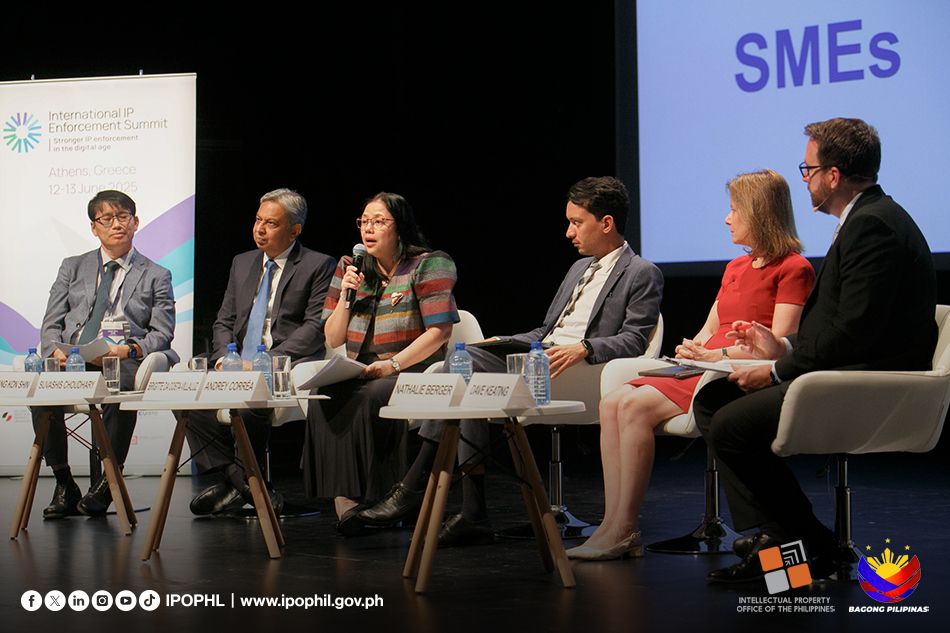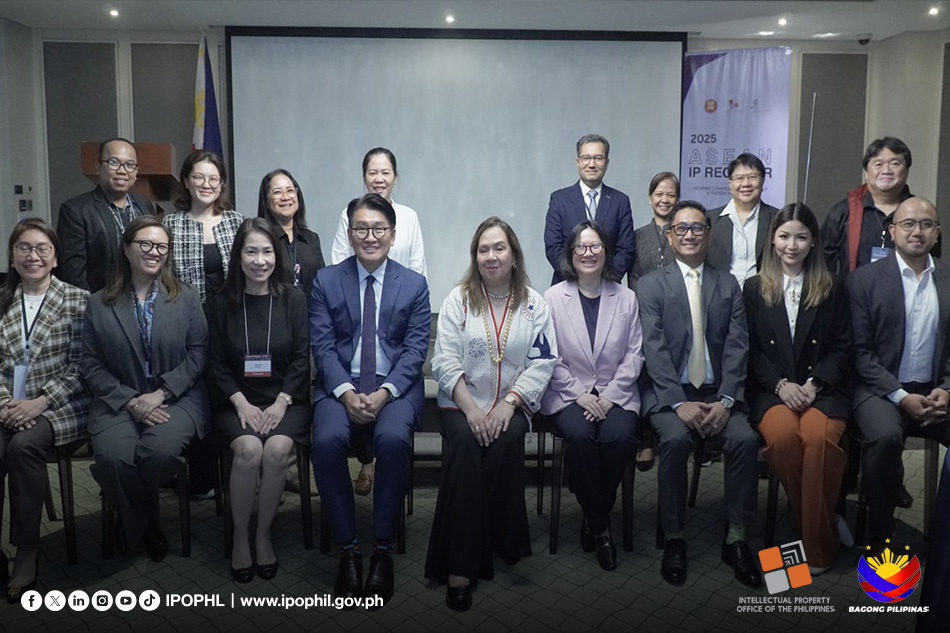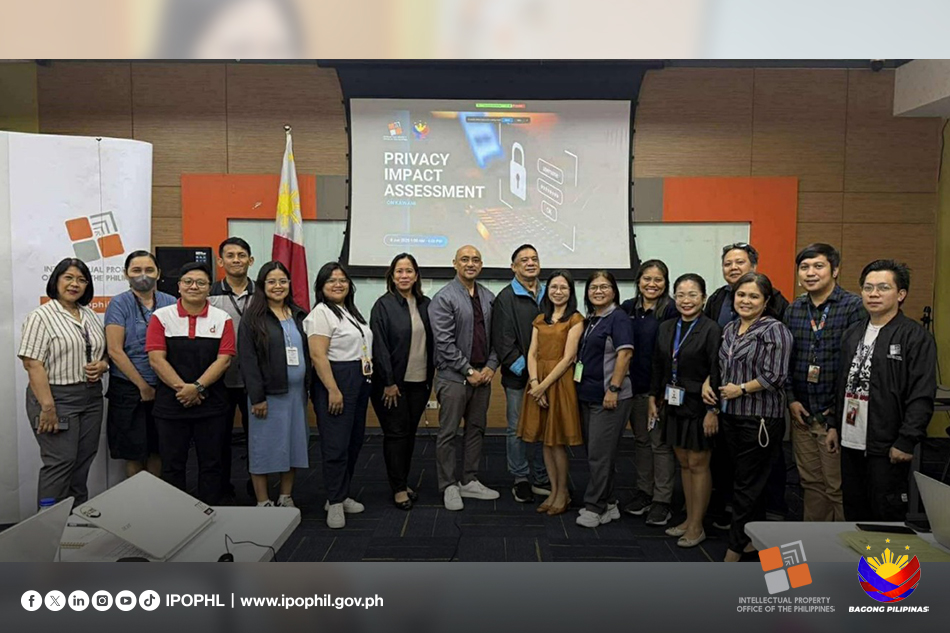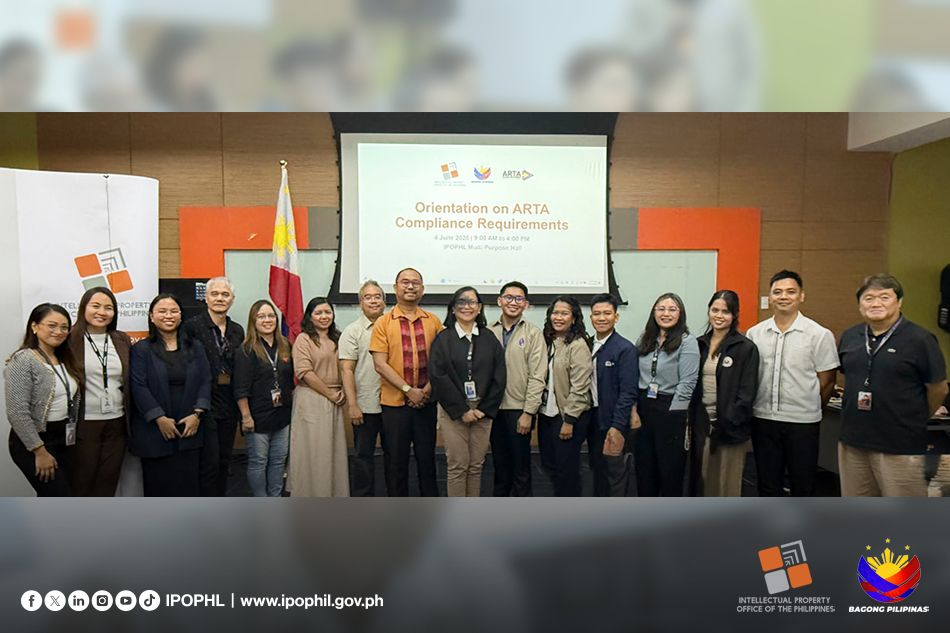
Ramon Orlina as master of glass, light and as champion of artists’ rights
WAGI SA PINOY IP FEATURE SERIES
May 31, 2024 | by Janina Lim
If one stood at the second floor of Ramon Orlina’s atelier in Manila, one might take it to be a garden. But instead of flowers, visitors are surrounded by over 200 pieces of glass art that vary in hue, shape and size, each of them with light that dances and dazzles from within.
Orlina, at 80 years old, welcomed the Intellectual Property Office of the Philippines (IPOPHL) team with a book in hand. Inside it are over nearly 200 pages spread with images of all the paintings and sculptures that won at the annual Arts Association of the Philippines (AAP) contest from 1948 to 1998. Much of this information he gathered on his own.
The initiative started when Orlina found little information on AAP upon taking the helm as its president in 1992. He extended his fingers to show how thick all the documents on AAP you can find right at its own office. “Just about the size of a sardine can. Paulit ulit pa (And it was even repetitive),” he said, adding that knowing who the AAP winners were from five years prior was even asking for too much. Now, seeing the compendium that tracks 50 years of AAP’s historic glory, one might have found it hard to picture how Orlina mustered to publish it at the end of his eight-year term starting with just a sardine-can-thick pile of documents. But seeing the multitude of glass art pieces in his atelier, in his five-story Museo Orlina in Tagaytay City, in various places around the world and in auction houses where his is the Philippine art piece that fetches the highest bids, it becomes easier to understand how Orlina, whether as a pioneer of an art movement or an initiative, can sculpt his way to outcomes extraordinaire using the age-old tricks of passion and discipline.
Orlina’s artistry comes from both nature and nurture. His great great grandfather was an artist in his hometown in Taal, Batangas. At a young age, Orlina was also exposed to the works of his uncle comic artist Jim Fernandez while his mother reinforced his creative inclinations. However, his ambition to take up fine arts had been met with his father’s disapproval.
“Walang pera diyan (There’s no money there),” Orlina said, recalling the words of his father who urged him to take up architecture instead. Little did they know it was architecture that would ironically unleash Orlina’s full artistic potential as he would work on houses, learn about metal and wood and eventually become a master of glass.
A self-learned master
Orlina held his first arts exhibition at the Hyatt Hotel in 1975. He presented a collection of paintings made not on traditional canvases but on glass. One of those the exhibit attracted were the executives of the Republic Glass Corporation. Impressed, the company immediately offered him a two-year scholarship in Czechoslovakia which is known as the global center of glass art. To their surprise, Orlina rejected the offer, refusing to be indebted to anyone and choosing full artistic freedom. Instead, Orlina proposed to learn about glass on his own, at his own pace and right at the company’s grounds where several chunks of glass lay in waste, waiting to be turned into art. Republic Glass agreed, launching the start of Orlina’s sculpting journey.
Everyday for months, the artist would drive an hour to the office and work with engineers to fabricate heavy equipment that would sculpt glass in the way Orlina envisioned the textures and the edges in his mind.
 |  |
Above: In Orlina’s “Arcanum XIX, Paradise Gained” which now hangs at the National Museum, the number 19 in roman numerals was intended to indicate “s”, the 19th letter in the alphabet, to refer to the Silahis Hotel which commissioned his work. Photo by IPOPHL. Left: Orlina mastered creating illusions through glass. From afar, circles on the “Silvery Moon” look like inflated bubbles but are actually concaves once inspected. Photo by IPOPHL. |
In 1976, Orlina worked on his very first commissioned work. For 10 months, he labored day and night on what would be the first of his Arcanum series – a 1.20 x 3.20 meter work of green glass art that would welcome visitors of the Silahis hotel. Today, it hangs at the entrance of the National Museum’s new building, inviting guests and the outdoor sunlight to dance and swirl through its prisms.
“He called it Arcanum because at the time he kept secret what he was doing until he won international contests and commissions where he became known even in the country when initially he had been doubted by many,” said Jerico Hanova, head curator at the Museo Orlina.
Two years after rejecting Republic Glass’ offer to study abroad, Orlina was again offered a scholarship to Czechoslovakia but now at the invitation of the Czech government itself. By this time, Orlina is quite more advanced in his sculpting techniques and hungry to elevate his craft. But to his surprise, what he learned in Czech were practices he had already been employing.
“After the Czechs saw what Orlina was doing, they called him ‘master’ instead of ‘student,’” Hanova said, explaining that Orlina’s pieces were much bigger that they could tower over the glass figures displayed in Czech exhibits.
Drawn to trouble
If you ask which one of his works is his favorite, Orlina would find it a difficult question and understandably so. But ask him which was the most challenging he finished, at least among his life-sized sculptures which could demand more time and labor, Orlina would point out to the Quintessence, a 400 x 250 meter glass frame cast in bronze which made its first appearance at the Singapore Art Museum in 1995.
After shipping the piece from Manila in a cargo ship, Orlina was appalled to find that the bronze structures were stolen, the thieves perhaps thinking to make money out of the metal. For 10 days, Orlina labored to recreate a new bronze cast. But this compelled a tweak in the original design to bring the entire frame to stand firm with the limited resources he had. At one point, he had also worked all on his own as his assistants had a limited working visa. In all, he spent 10 days reworking the Quintessence, but fortunately, in time for the display of the exhibit.
A few years later, Orlina will be dealing with another kind of theft, this time one that involves fakes and forgeries.
Shaping the collective future of artists
 |  |
Photo above: Orlina shared with IPOPHL several news clippings which showed the role he played in exposing forgeries during his term as AAP president from 1992 to 2000. Photo by IPOPHL. Right photo: Orlina points out the specific strokes that make Carmelo stand out as an artist and which helped him distinguish a forged one from an original piece. Photo by IPOPHL. |
During the interview, the artist turned to one of the pages of the AAP compendium to show the “Blackadder Clipper” painted in 1946 by Alfredo Carmelo. Orlina shows the fine realistic details that give away Carmelo’s trademark and which helped him expose a fake Carmelo during his stint as president at the AAP. Aside from the works of Carmelo, Orlina also boldly exposed on national media fake works claiming to be of the country’s respectable artists, such as Fernando Amorsolo, Nicanor Abueva, Jose Joya and Juvenal Sansó, among others.
“Napakalaki na ng fakes sa arts world, parang organized crime group na sila,” Orlina added.
From being a pioneer of glass art in the Philippines, Orlina is now spearheading efforts to form a collecting society for visual artists in the country. Aside from fighting forgeries, the collecting society is hoped to fully enforce the rights of artists and ensure that all are recognized and remunerated fairly.
“We want fair pay and recognition for all artists. It’s their right and it’s the law and we don’t want auction houses to cherrypick which artists are given their rightful due,” said Michael Orlina, Orlina’s son who has a degree in Arts Management and has been following his father’s footsteps as a glass sculptor.
Under Section 200 of the IP Code of the Philippines, artists and their heirs are bestowed a resale right which entitles them a maximum of a 5% share from the sale or lease value of their original paintings, sculptures and manuscripts, even after the first sale or lease. The protection lasts in the lifetime of the author plus 50 years and ensures that artists are compensated as the value of their works rise.
 |  |
| Photos above and on the left are some paintings of the Grupo Sining Batangueño and Kapit Kamay Kasining. They are part of Summer Bliss exhibit which will continue to be on display at the Museo Orlina until May 30. The exhibit is part of Orlina’s advocacy to support and promote local artists. This June, the next exhibit will feature local glass sculptors. Photo by IPOPHL. |
Recently, Orlina registered 13 of his works at the Bureau of Copyright and Related Rights to strengthen proof of his ownership and to prod auction houses to give him his rightful royalties. He hopes other artists would also know the importance of copyright registration and active enforcement, seeing the future collecting society as a pathway to empower artists with knowledge and serve them. “What we’re doing now. It’s for the artists because I once used to be a starting and struggling artist. and I knew how hard it was,” Orlina added.
This feature aims to honor Orlina as 2024 Gawad Yamang Isip Awardee for Visual Arts.







